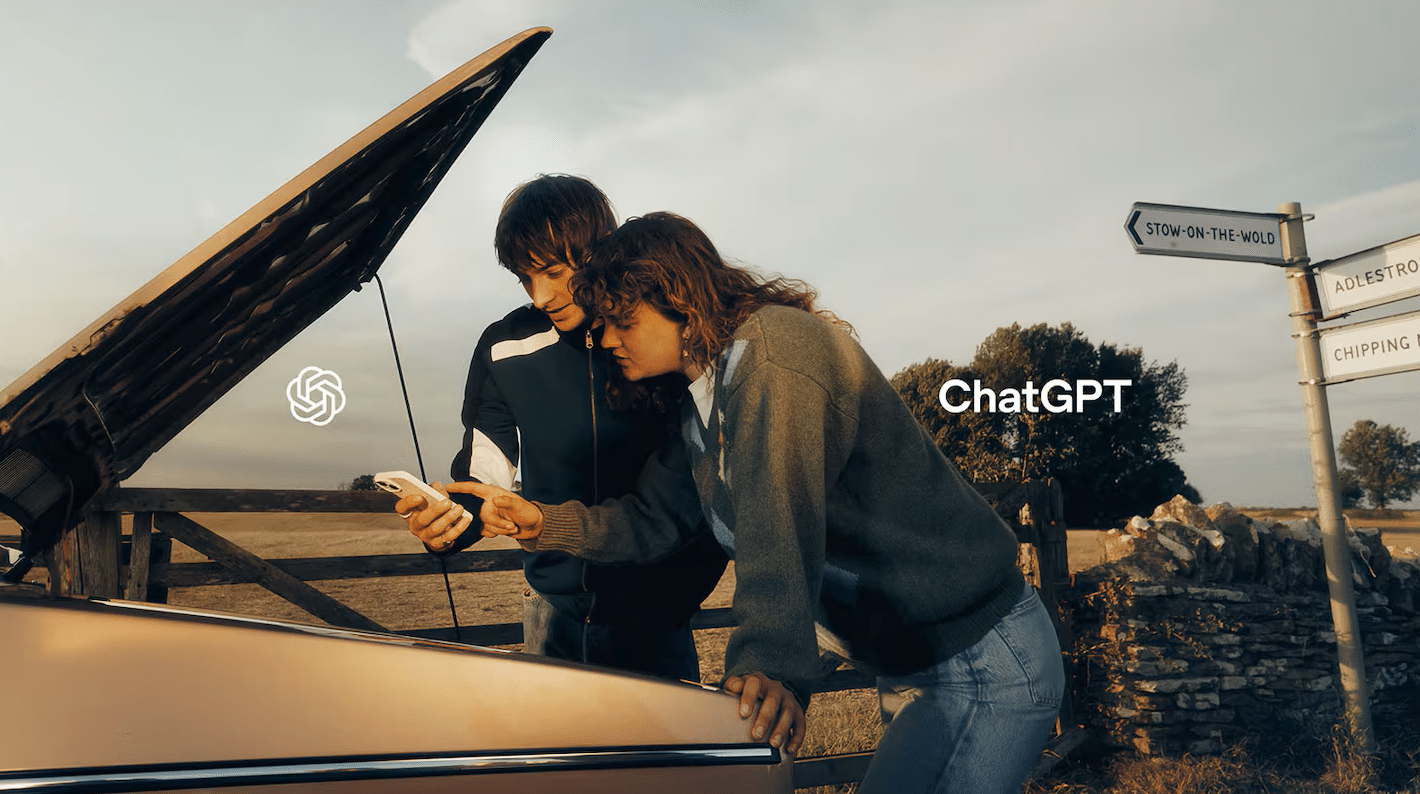OpenAI Anchors First Brand Campaign In Humanity, With A Little Help From ChatGPT – bandt.com.au

OpenAI has launched its first extended brand campaign for ChatGPT, leveraging evocative, human-led storytelling to position the AI assistant as a companion to life’s little moments.
The 30-second spots are rolling out across the US and UK, showcasing slice-of-life moments: a young man preparing a meal for a date, a sibling duo planning a trip and a person kick-starting a fitness routine.
Shot in a cinematic style, each scene unfolds until the context of a ChatGPT prompt appears on screen. The chatbot’s replies roll upward like movie credits, grounding the scenes and highlighting how the platform was utilised to reach this point.
“The primary strategy is to lift up how people are using [ChatGPT] in their daily lives and what we’re hearing from them, which is, ‘I want you to show me other ways people are using this in ways that might benefit and inspire me,’” said Kate Rouch, OpenAI’s chief marketing officer. “It’s a simple strategy, but it speaks to the core followership we have in the product”.
While ChatGPT was utilised in the creative process, the work was developed in-house with indie agency Isle of Any, led by former Droga5 creatives Laurie Howell and Toby Treyer-Evans, and directed by Miles Jay.
The irony of the AI platform grounding its brand platform in human craft is deliberate. Rouch made clear that OpenAI uses ChatGPT “a lot” for ideation and production, but stressed that “the creative process is very intentionally anchored in human creativity,” she said. “Shooting on 35mm film, using really iconic music and great directors, this speaks to the thesis of the campaign, which is that these are tools to enhance human creativity in ways very small and quotidian, but also on bigger stages”.
OpenAI executive creative director Zach Stubenvoll described ChatGPT as another creative partner alongside the agency and in-house team.
“The joy of creating this work began with shared intention and partnership. We brought together our in-house creative teams along with our partners to create a new approach to craft. We shot the TV spots on film using custom-made lenses and used ChatGPT as a co-creator throughout the creative process. This helped us expand our thinking, brainstorm new characters, and as you’ll see, became a critical part of the [campaign] itself.”
The out-of-home component further simplifies things, showing people in everyday scenarios, such as laughing on steps, lifting weights, or leaning over a car bonnet, framed only by the ChatGPT logo.
“People use ChatGPT in very different ways for very different outcomes,” said Stubenvoll. “It’s not our goal to prescribe how to use ChatGPT or the outcome of using it. Instead, our goal with the OOH was to invite people to envision a situation where ChatGPT can be personally helpful to them.
“We wanted our OOH to fill the world with a bit of beauty, establish the fact people are using ChatGPT in so many wonderful ways, and with quiet confidence, introduce the brand to more people,” he said.
“Connecting with people on a human level is at the heart of what makes this work so meaningful,” added Michael Tabtabai, OpenAI’s VP of creative. “This campaign … sets the intention for how we want to show up as a brand: with humanity, creativity and a clear focus on people.”
Since its first ad campaign in the Super Bowl, created in partnership with Accenture Song earlier this year, OpenAI has been rapidly expanding its agency roster. In August, it named PHD as its global media agency of record.
That Super Bowl spot positioned ChatGPT alongside humanity’s greatest innovations, tracing technological evolution from fire and the wheel through to DNA sequencing and space exploration, before culminating in modern AI applications. While OpenAI’s text-to-video tool Sora was used to prototype ideas, the final animation was also executed entirely by human artists.
“This is a celebration of human creativity and an extension of human creativity,” Rouch said at the time.
With ChatGPT now boasting more than 700 million weekly users, the campaign signals a deliberate move to push the brand into mainstream culture.
Sign in to your account

